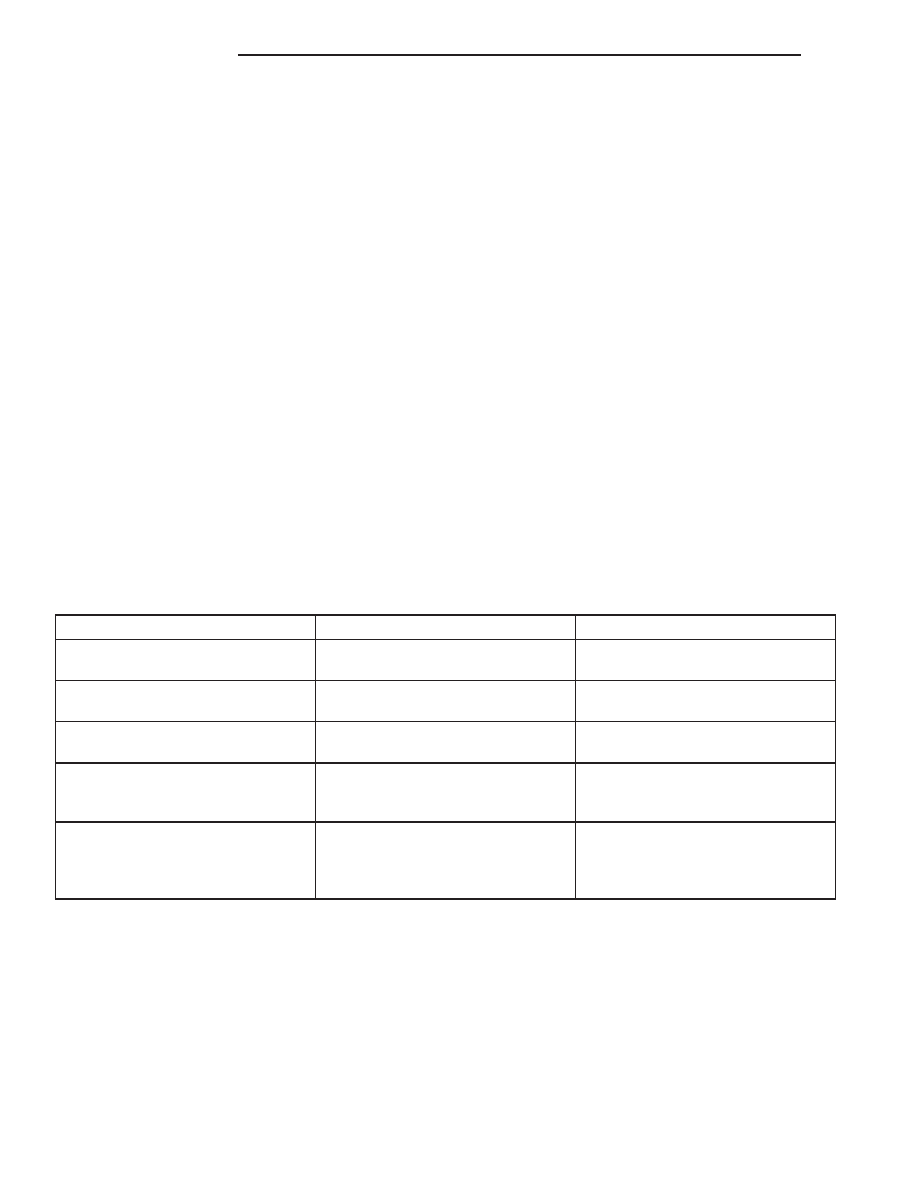Dodge Dakota (R1). Manual - part 508

(6) Record the compression pressure on the third
revolution. Continue the test for the remaining cylin-
ders.
(Refer to 9 - ENGINE - SPECIFICATIONS) for the
correct engine compression pressures.
DIAGNOSIS AND TESTING—CYLINDER
COMBUSTION PRESSURE LEAKAGE
The combustion pressure leakage test provides an
accurate means for determining engine condition.
Combustion pressure leakage testing will detect:
• Exhaust and intake valve leaks (improper seat-
ing)
• Leaks between adjacent cylinders or into water
jacket
• Any causes for combustion/compression pressure
loss
WARNING: DO NOT REMOVE THE RADIATOR CAP
WITH THE SYSTEM HOT AND UNDER PRESSURE.
SERIOUS
BURNS
FROM
HOT
COOLANT
CAN
OCCUR.
Check the coolant level and fill as required. DO
NOT install the radiator cap.
Start and operate the engine until it attains nor-
mal operating temperature, then turn OFF the
engine.
Remove the spark plugs.
Remove the oil filler cap.
Remove the air cleaner.
Calibrate the tester according to the manufactur-
er’s instructions. The shop air source for testing
should maintain 483 kPa (70 psi) minimum, 1,379
kPa (200 psi) maximum and 552 kPa (80 psi) recom-
mended.
Perform the test procedure on each cylinder accord-
ing to the tester manufacturer’s instructions. While
testing, listen for pressurized air escaping through
the throttle body, tailpipe or oil filler cap opening.
Check for bubbles in the radiator coolant.
All gauge pressure indications should be equal,
with no more than 25% leakage.
FOR EXAMPLE: At 552 kPa (80 psi) input pres-
sure, a minimum of 414 kPa (60 psi) should be main-
tained in the cylinder.
Refer to CYLINDER COMBUSTION PRESSURE
LEAKAGE DIAGNOSIS CHART below
CYLINDER COMBUSTION PRESSURE LEAKAGE DIAGNOSIS CHART
CONDITION
POSSIBLE CAUSE
CORRECTION
AIR ESCAPES THROUGH
THROTTLE BODY
Intake valve bent, burnt, or not
seated properly
Inspect valve and valve seat.
Reface or replace, as necessary
AIR ESCAPES THROUGH
TAILPIPE
Exhaust valve bent, burnt, or not
seated properly
Inspect valve and valve seat.
Reface or replace, as necessary
AIR ESCAPES THROUGH
RADIATOR
Head gasket leaking or cracked
cylinder head or block
Remove cylinder head and inspect.
Replace defective part
MORE THAN 50% LEAKAGE
FROM ADJACENT CYLINDERS
Head gasket leaking or crack in
cylinder head or block between
adjacent cylinders
Remove cylinder head and inspect.
Replace gasket, head, or block as
necessary
MORE THAN 25% LEAKAGE AND
AIR ESCAPES THROUGH OIL
FILLER CAP OPENING ONLY
Stuck or broken piston rings;
cracked piston; worn rings and/or
cylinder wall
Inspect for broken rings or piston.
Measure ring gap and cylinder
diameter, taper and out-of-round.
Replace defective part as necessary
9 - 220
ENGINE 5.9L
AN
ENGINE 5.9L (Continued)